 Movies and TV
Movies and TV  Movies and TV
Movies and TV  History
History 10 Legendary Tales of Revenge Being Served Cold
 Humans
Humans 10 World-Changing Ideas Explained First-Hand by Their Creators
 Movies and TV
Movies and TV 10 Great Comic Book Castings Wasted on Bad Scripts
 Creepy
Creepy 10 Families Whose Houses Scared Them to Death
 Food
Food 10 Foods That Went from Garbage to Gourmet
 Animals
Animals Ten Animals with More Interesting Sex Lives Than You
 Weird Stuff
Weird Stuff 10 Ridiculous Things Hackers Have Controlled Remotely
 The Arts
The Arts 10 Great Movies That Were Made into Bad Musicals
 Miscellaneous
Miscellaneous 10 Hilarious Excuses Firms Once Gave to Cover Up Their Bad Deeds
 Movies and TV
Movies and TV 10 Times Actors Rewrote Scripts They Hated
 History
History 10 Legendary Tales of Revenge Being Served Cold
 Humans
Humans 10 World-Changing Ideas Explained First-Hand by Their Creators
Who's Behind Listverse?

Jamie Frater
Head Editor
Jamie founded Listverse due to an insatiable desire to share fascinating, obscure, and bizarre facts. He has been a guest speaker on numerous national radio and television stations and is a five time published author.
More About Us Movies and TV
Movies and TV 10 Great Comic Book Castings Wasted on Bad Scripts
 Creepy
Creepy 10 Families Whose Houses Scared Them to Death
 Food
Food 10 Foods That Went from Garbage to Gourmet
 Animals
Animals Ten Animals with More Interesting Sex Lives Than You
 Weird Stuff
Weird Stuff 10 Ridiculous Things Hackers Have Controlled Remotely
 The Arts
The Arts 10 Great Movies That Were Made into Bad Musicals
 Miscellaneous
Miscellaneous 10 Hilarious Excuses Firms Once Gave to Cover Up Their Bad Deeds
10 Outrageous Slums In Unexpected Places
Everyone has heard of the world’s most famous slums: Hell’s Kitchen, Skid Row, most of Detroit, etc. But there are slums everywhere, even in the last places you would expect to find urban decay. Sometimes, the causes of the deplorable conditions found there are also unexpected.
10Vancouver, British Columbia’s Downtown Eastside
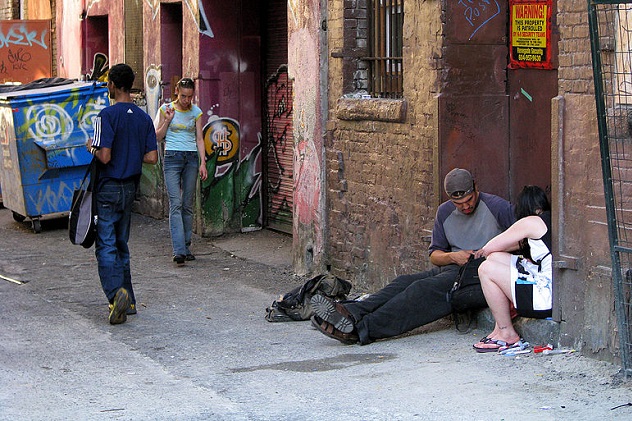
Consistently voted one of the world’s best cities to live in by travel magazines, Vancouver is known for its scenic views and beautiful architecture. Just east of Main Street, however, lies one of the very worst examples of urban squalor in the modern day.
The downtown eastside is the poorest urban postal code in all of Canada. It’s home to thousands of drug addicts, many of whom are HIV-positive. Weirdly enough, many of those afflicted with the deadly disease are huddled within an 18-block radius. Hepatitis C cases are also too numerous to count. The thriving Hastings Street Market, where stolen goods are openly sold, operates along the main drag.
Theft, prostitution, murder, and mental illness plague the district, and the homeless and disenfranchised can be found everywhere within the blighted area. The infamous Robert Pickton found most of his victims in this area, as the transient nature of its population made them easy targets.
Despite massive efforts at renewal and clean-up over the years, conditions on the eastside only seem to get worse. Many continue to fall into the drug-riddled lifestyle surrounding them, only to disappear within a few years and never be heard from again. An excellent documentary about the truly horrific conditions of the downtown eastside called Pain and Wastings was made in 2008.
9Canada Real, Madrid
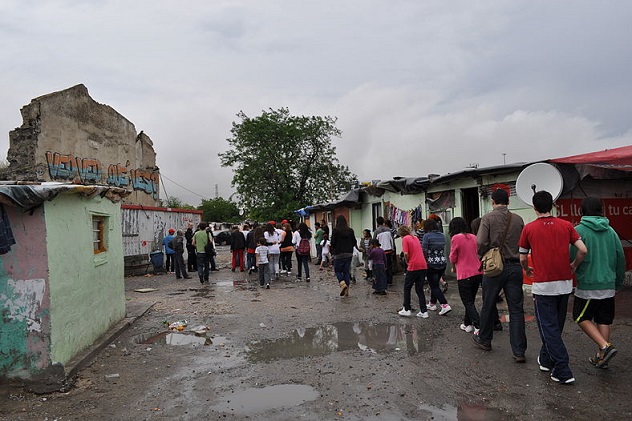
Over 16 kilometers in length, Canada Real Galiana is Europe’s largest shantytown, home to over 30,000 people. Situated right next to Madrid’s garbage incineration site, the area’s residents can often be seen picking through the refuse to scrounge up usable goods to resell or use themselves.
Most of the homes in the area were built by the residents themselves, often from whatever scraps of wood and metal they could find within the desolation. The area is Spain’s drug capital, and a busy stretch of the only paved road is known as a “shooting gallery,” where all sorts of illegal substances can be bought. The people who have the misfortune to call this area home are trapped, receiving no assistance and no official recognition from their government.
Spanish authorities have even taken steps to demolish the area entirely, knocking down the homes of people who have known no other way of life. Left with no resources and nowhere to go, these people simply raid the demolition sites where the scraps of their previous homes are dumped and rebuild what was torn down. Should they have no luck, they are often left to squat in the hole in the ground where their home once was.
Local social workers often try to help the residents but have to do so on their own time and with little notice, as the area is essentially “no man’s land” in the eyes of the government. Only a few dozen people try to reach out to the families of this slum, and due to its bulging population, help is scarce indeed. For now, the area is seen only as a problem to be concealed if not eradicated.
8Colonias in Texas
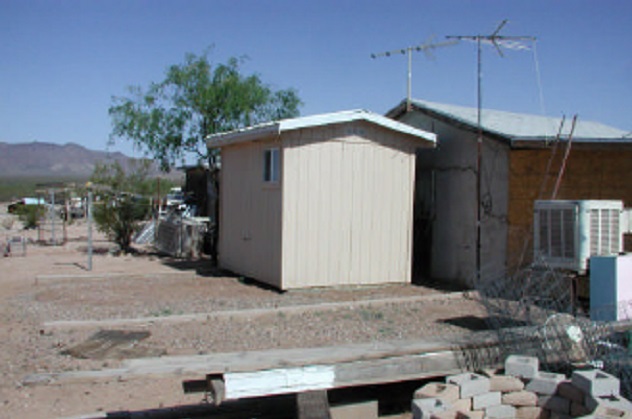
Found in various parts of Texas and the American Southwest, the communities that form the sprawling shantytowns known as colonias consist mainly of Hispanic people. Some have come from Mexico to America seeking a better life, while others have been born in the colonias and know nothing else of the outside world. Just under 2,300 of these makeshift communities exist along the border and around the state, home to an estimated 500,000 people. Since the majority of those who live in these communities are undocumented residents and transient in nature, getting an official headcount is nearly impossible.
Most of these communities sprang up in the 1950s, rising from plots of land that were sold to desperate immigrants looking for a better life. For the most part, these poor communities remain as they were initially formed: shantytowns with no real infrastructure. In some communities, well-built homes equipped with running water and electricity can be found, but this type of dwelling is still very rare. The residents eke out meager livings as farm laborers or construction hands.
To their credit, the American government and legislators in Texas have both proposed laws protecting these communities and provided them with resources. Unfortunately, the overwhelming scale of the task and complications of carrying it out still prove challenging.
7Mahwa Aser, Yemen
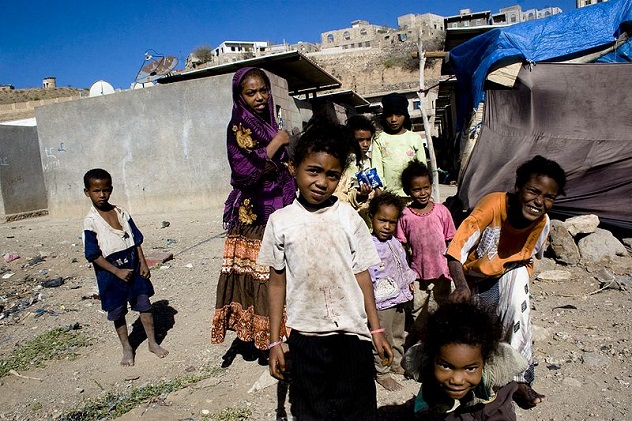
Found next to Sana’a, the capital city of Yemen, the area known as Mahwa Aser is one of the poorest and most dangerous on Earth. Home to the Akhdam, a people of African descent who are treated as second-class citizens in Yemeni society, the area serves almost as a prison to its 17,000 residents. They are barred from all civil service in Yemen, cannot vote, and have almost no rights.
This leaves them trapped in conditions few Westerners could even imagine. There is no sewage system, electricity, arable land, or real infrastructure in the area, and they are left to either beg for whatever the goodwill of their fellow man will provide or work as street cleaners in the nearby capital.
During the famous “Arab Spring” that swept across the Middle East and North Africa in recent years, the Akhdam people took advantage of the spirit of the times to stage a number of strikes and protests, only to face the full might of Yemen’s military. Hundreds of protestors were killed by military forces, and it was only after a massive strike by the street cleaners that some concessions were made by the government to build infrastructure and homes in the area.
Unfortunately, not much was done to permanently change the slum’s conditions. To this day, an entire ethnic group of people, unknown to almost everyone in the outside world, faces not only endless squalor but the continued wrath of their own government.
6The Cage Slums Of Hong Kong, China
Sometimes, living in poverty can feel like a prison, but there are people in this world who live in literal cages. Amazingly, they can be found in Hong Kong, one of China’s most prosperous cities.
An estimated 200,000 people live in such conditions in the city. Some of the cages are stacked on top of each other, 10 cages high or more. Some of the people who call these places home have lived there for decades, and some were even born into the lifestyle. Life within these homes offers no protection from the weather, no sense of privacy, and a constant atmosphere of noise and pollution.
A small step up from the “cage homes” are the “coffin homes,” which are little more than sleeping spaces hollowed out from a building’s walls, where 25 or more people may live. Those who dwell in cage or coffin homes may see themselves as the lucky ones in the Hong Kong slums. Those who cannot afford a home of any kind are forced to sleep under bridges or directly on the streets.
For decades, the situation of these slums has only gotten worse, thanks to inadequate social systems, high real estate prices in the extremely crowded city, and the unscrupulous landlords who are willing to rent unsuitable living spaces to the desperate and needy. The list of applicants for subsidized housing numbers in the hundreds of thousands, many of whom die from their horrible living conditions before they get the opportunity to live a normal life. Unfortunately, the problem of poverty in Hong Kong is now so massive, with more and more impoverished new residents moving in every day, that there seems to be no solution.
5City Of The Dead, Cairo
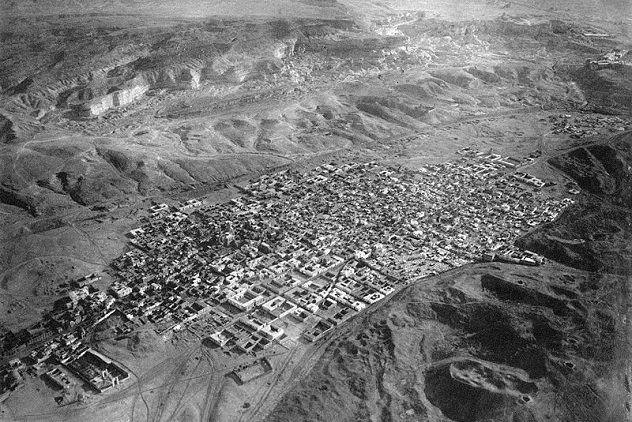
Unbelievable in modern times, an actual necropolis exists in Egypt, known as the “City of the Dead.” Known to have existed for over 700 years, Cairo is so overcrowded that about 500,000 of its 18 million residents are forced to live among the tombs of their ancestors. The number of dead “residents,” an estimated one million tombs within an area spanning 6.5 kilometers (4 mi), is also staggering.
The houses themselves appear almost normal, with kitchens, courtyards, and even gardens. In the tombs, men and women are buried separately, each grave simply covered with a stone slab. However, electricity is rare, there is virtually no police force or security of any kind, and the streets connecting the various homes are unpaved and confusing. Crime is rampant, and many residents live among the dead illegally, though the Egyptian government does very little to enforce property laws.
The future of the people living this modern-day city of the dead remains uncertain. The Egyptian government is taking steps to relocate its residents, but since real estate is so expensive in Cairo and accurately recording and tracking the slum’s residents is tricky, the task seems nearly impossible. For now, steps to provide more of the residents with running water and electricity seem to be the only positive action that the government is able to take.
4The Tent Cities Of Seattle, Washington
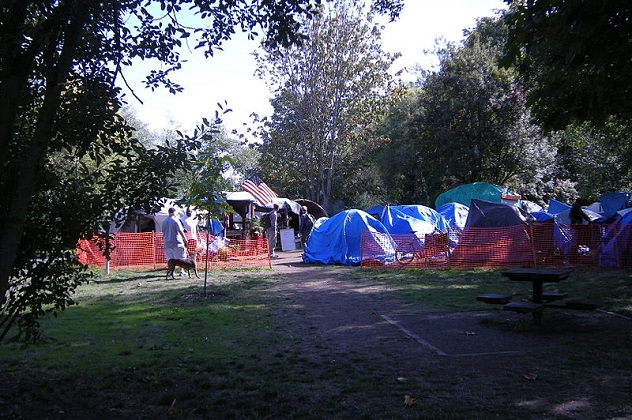
Tent cities spring up all over from time to time, but in Seattle—especially in an area known as “Nickelsville”—they seem to be a permanent fixture. Around 275 people call these makeshift communities home, not counting the hundreds more who “camp out” each night only to pull up their stakes and disappear the next morning. Whether permanent or temporary, all of the residents are poor and most are unskilled, with little in the way of job prospects or hope of a better life.
In the 1970s, a series of tragic fires led to the closure of several complexes of cheap and secure housing units known as “SROs” (Single Room Occupancy), which forced many of Seattle’s less fortunate onto the streets. This new breed of Seattle’s homeless are forced to live in constant fear of arrest for illegally camping. The only solution they had was tent cities, in which an individual can pack up and move on if needed in less than one minute. Safety and security are minimal within these places, and electricity and sanitation are nonexistent. The people who call these places home live hand to mouth, sometimes even hunting local wildlife for food.
It seems the residents of these dwellings have little hope for improvement, at least for now. Seattle came up with a 10-year plan to eliminate homelessness within the city over a decade ago, obviously to little effect, and police within the city mostly treat tent city residents as criminals. Fortunately, some members of the public have been kind enough to drop off donations and advocate for a better solution than merely herding them around.
3Paris, France
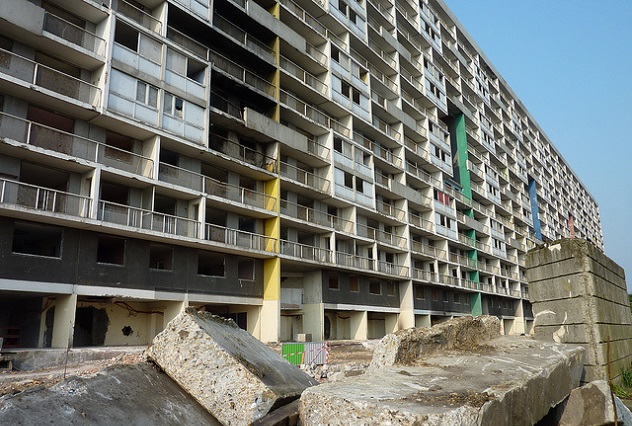
The city of romance hides a dark secret just a 10-minute train ride away. An area known as La Courneuve has been labeled by the local police as a “no-go zone,” one of 150 that dot the French landscape, mostly around Paris.
La Courneuve and other makeshift communities like it sprang up with a wave of Middle Eastern and Roma immigration during the middle of the 20th century that authorities at the time were too slow to deal with. As a result, the children of these people, and their children after them, grew up as generally unrecognized citizens within their own country. This attitude and the residents’ dissatisfaction with their living conditions have sparked massive riots throughout the last decade.
Although the rage of their impoverished citizens has subsided for the most part, little has changed within the worst parts of Paris. Since most residents have no hope of employment due to a combination of racism and a lack of available jobs, they spend their days getting high and outwitting corrupt police officers looking to arrest them so they can use the drug themselves or resell them. The area is, as one resident put it, entirely gray. “The buildings are gray. The people are gray. Everything is gray. It’s the same people, and there is nothing to do, nothing to do. You wake up every morning looking for work. But why? There isn’t any.”
2Hollywood, California

In the place where dreams are made, some are forced to live in places straight of your worst nightmare. Countless hopefuls flee to the city every year to make it big in the world of show business, but maybe if they saw firsthand the living conditions of La-La Land’s less fortunate, they would turn back in horror.
Famous for its Skid Row, Los Angeles now has more slums within Hollywood itself than its more well-known cousin. They began to appear with the boom of the movie industry and only grew worse from there, with the advent of “B-movies” and the pornography industry in the 1970s increasing the number of poor flocking to the city exponentially. Some buildings hold hundreds of residents in conditions that seem unlivable. The usual parade of drugs, prostitution, crime, and despair can be found within Hollywood’s worst areas, magnified by the more unprincipled members of the film industry who seek to con those seeking a shot at stardom out of their meager savings.
Although recent efforts by local residents have won some concessions in restoring grandeur to the area, both city officials and residents agree that it is a losing battle. It seems that as soon as one building is condemned or demolished, another springs up in its place. As thousands of fame- and fortune-seekers come to the city unprepared every year, the stars in their eyes overtake the plans in their head, leading to a problem that is growing like a cancer within one of America’s most cherished national treasures.
1Dubai, United Arab Emirates
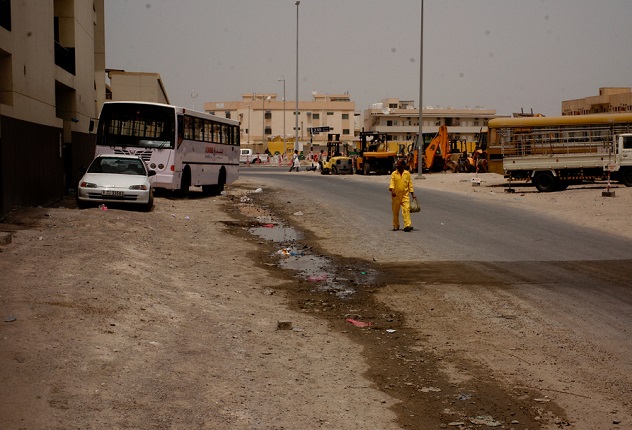
Dubai seemed like a miracle to most outsiders until the worldwide financial meltdown of 2008, after which its ugly side was exposed for all to see. The city that boasts some of the world’s most expensive buildings also houses some of the world’s worst slums.
Less than 1 percent of Dubai’s population is native-born, and many of these foreigners are unable to legally obtain citizenship. In the government’s effort to retain some semblance of cultural identity, laws that should apply to everyone are biased in favor of those who were born there.
As such, countless thousands of workers who came to the country for jobs found themselves impoverished after the 2008 collapse, with no social safety net and no other recourse but to settle in areas that the city would rather you didn’t know about. Although actual statistics on some of the worst areas are hard to find due to government interference, pictures speak a thousand words.
The sad fact is that most of modern Dubai was built from slave labor, mostly by immigrants from Pakistan and India who came to the country for work only to end up in one of Dubai’s well-hidden slums, or worse yet, the many labor camps that have popped up around construction projects. These people are Dubai’s forgotten, left to fend for themselves in a city where they remain unwelcome even though they helped construct it.
Damien B. is a part-time writer and basketball lover who is interested in history, politics, crime, and of course, basketball.








